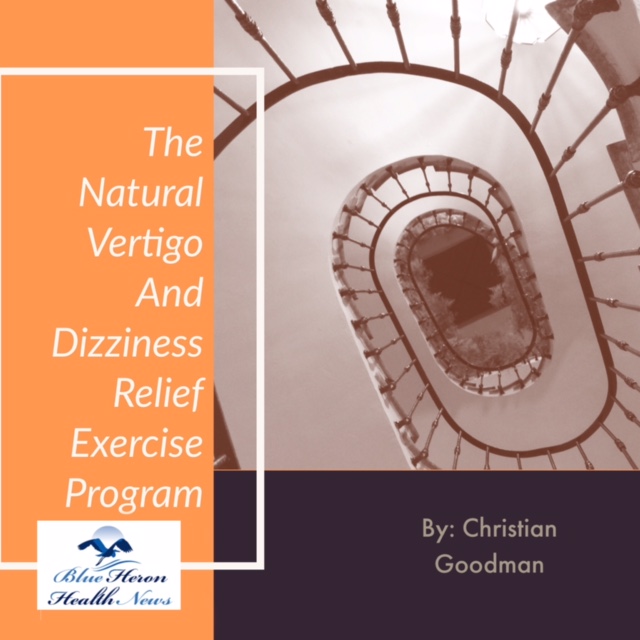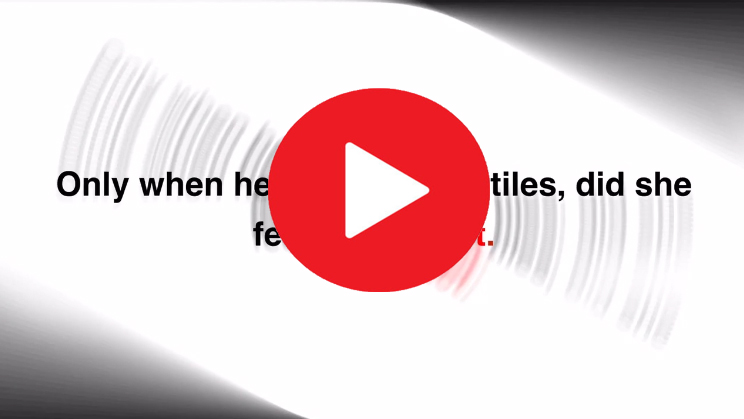
The Vertigo And Dizziness Program™ By Christian Goodman Vertigo and Dizziness Program is a designed to help stop vertigo and dizziness once and for all. Medical practitioner don’t know the exact cure for this condition but this program will show you exactly what you need to make this painful condition a thing of the past. This program has recommended a set of simple head exercises that help cure this condition.
What is vertigo?
Understanding Vertigo: A Comprehensive Analysis
Introduction
Vertigo is a complex condition characterized by a sensation of spinning or dizziness, often accompanied by nausea, imbalance, and disorientation. This comprehensive analysis explores vertigo’s definition, causes, types, symptoms, diagnosis, treatment options, and impact on quality of life. Understanding vertigo is crucial for effective management and improving the quality of life for those affected.
Chapter 1: Definition and Overview
What is Vertigo?
Vertigo is a subtype of dizziness characterized by a false sensation of movement, either of the individual or the environment. It is often described as a spinning or whirling sensation. Vertigo can significantly impact an individual’s balance, coordination, and overall sense of stability.
Differentiating Vertigo from Other Types of Dizziness
- Lightheadedness: A feeling of faintness or near-fainting.
- Disequilibrium: A sense of imbalance without the spinning sensation of vertigo.
- Presyncope: A feeling of impending fainting, often accompanied by cardiovascular symptoms.
Chapter 2: Anatomy and Physiology of Balance
The Vestibular System
- Inner Ear: The vestibular system, located in the inner ear, includes the semicircular canals, otolith organs (utricle and saccule), and vestibular nerve. These structures detect head movements and position changes.
- Central Nervous System: The brainstem and cerebellum process vestibular signals and integrate them with visual and proprioceptive information to maintain balance and spatial orientation.
How Balance is Maintained
- Sensory Input Integration: The brain integrates input from the vestibular system, visual system, and proprioceptors in muscles and joints to maintain balance.
- Motor Output: Adjustments in posture and eye movements (via the vestibulo-ocular reflex) help maintain stability and clear vision during movement.
Chapter 3: Causes of Vertigo
Peripheral Causes
- Benign Paroxysmal Positional Vertigo (BPPV): The most common cause of vertigo, BPPV occurs when calcium carbonate crystals (otoconia) dislodge from the utricle and migrate into the semicircular canals, causing abnormal fluid movement and vertigo.
- Meniere’s Disease: A chronic condition characterized by episodic vertigo, hearing loss, tinnitus, and a feeling of fullness in the ear, caused by excessive fluid buildup in the inner ear.
- Vestibular Neuritis: Inflammation of the vestibular nerve, typically caused by a viral infection, leading to severe vertigo, imbalance, and nausea without hearing loss.
- Labyrinthitis: Inflammation of both the vestibular nerve and the labyrinth (inner ear), often due to infection, causing vertigo and hearing loss.
Central Causes
- Migraine-Associated Vertigo: Migraines can cause vertigo either as a primary symptom or as an aura preceding the headache phase.
- Vestibular Migraine: A subtype of migraine characterized by vertigo without the headache phase.
- Stroke and Transient Ischemic Attacks (TIAs): Ischemic events affecting the brainstem or cerebellum can cause vertigo.
- Multiple Sclerosis: Demyelination in the central nervous system can disrupt vestibular pathways, leading to vertigo.
Chapter 4: Types of Vertigo
Peripheral Vertigo
- BPPV: Characterized by brief episodes of vertigo triggered by changes in head position.
- Meniere’s Disease: Features recurrent episodes of vertigo lasting minutes to hours, often accompanied by hearing loss and tinnitus.
- Vestibular Neuritis: Sudden onset of severe vertigo, imbalance, and nausea without hearing loss, typically resolving over several weeks.
Central Vertigo
- Migraine-Associated Vertigo: Vertigo episodes associated with migraines, which may or may not include headache.
- Stroke-Induced Vertigo: Persistent vertigo due to ischemic events in the brainstem or cerebellum.
- Multiple Sclerosis: Vertigo associated with demyelinating lesions in the central nervous system.
Chapter 5: Symptoms of Vertigo
Common Symptoms
- Spinning Sensation: The hallmark symptom of vertigo, often described as a feeling that the surroundings are moving or spinning.
- Imbalance: Difficulty maintaining balance, leading to unsteadiness and increased risk of falls.
- Nausea and Vomiting: Often accompany vertigo due to the close connection between the vestibular system and the autonomic nervous system.
- Nystagmus: Involuntary, rapid eye movements that occur with vertigo.
Associated Symptoms
- Hearing Loss: Common in conditions like Meniere’s disease and labyrinthitis.
- Tinnitus: Ringing or buzzing in the ears, often associated with Meniere’s disease.
- Fullness in the Ear: A feeling of pressure or fullness in the ear, commonly reported in Meniere’s disease.
Chapter 6: Diagnosis of Vertigo
Clinical Evaluation
- Patient History: Detailed history of symptoms, including onset, duration, triggers, associated symptoms, and medical history.
- Physical Examination: Includes assessment of the vestibular system, hearing tests, and neurological examination.
Diagnostic Tests
- Dix-Hallpike Maneuver: A positional test used to diagnose BPPV by observing nystagmus in response to specific head movements.
- Audiometry: Hearing tests to assess hearing loss and differentiate between peripheral and central causes.
- Electronystagmography (ENG) and Videonystagmography (VNG): Tests that record eye movements to evaluate vestibular function and detect nystagmus.
- Vestibular Evoked Myogenic Potentials (VEMP): Tests that assess the function of the otolith organs and their connections to the brainstem.
- Imaging Studies: MRI or CT scans may be used to rule out central causes such as stroke or tumors.
Chapter 7: Treatment Options for Vertigo
Medication
- Vestibular Suppressants: Medications such as meclizine, dimenhydrinate, and benzodiazepines can reduce symptoms of vertigo and nausea.
- Antiemetics: Medications like ondansetron and promethazine can help manage nausea and vomiting.
- Diuretics: Used in Meniere’s disease to reduce fluid buildup in the inner ear.
Non-Medication Therapies
- Vestibular Rehabilitation Therapy (VRT): A specialized form of physical therapy that includes exercises to improve balance and reduce dizziness.
- Canalith Repositioning Maneuvers: Techniques such as the Epley maneuver are used to treat BPPV by repositioning dislodged otoconia in the inner ear.
- Dietary Modifications: Reducing salt intake in Meniere’s disease to manage fluid buildup.
Surgical Options
- Labyrinthectomy: Removal of the inner ear’s balance organs, used in severe cases of Meniere’s disease.
- Vestibular Nerve Section: Cutting the vestibular nerve to relieve vertigo while preserving hearing.
- Endolymphatic Sac Decompression: A procedure to reduce fluid pressure in the inner ear for Meniere’s disease.
Chapter 8: Impact of Vertigo on Quality of Life
Physical Impact
- Mobility and Balance: Vertigo can significantly impair mobility and balance, leading to an increased risk of falls and injuries.
- Daily Activities: Difficulty performing daily tasks such as walking, driving, and working.
Emotional and Psychological Impact
- Anxiety and Depression: Chronic vertigo can lead to anxiety, fear of falling, and depression due to the unpredictable nature of the condition.
- Social Isolation: Avoidance of social activities and public places due to fear of vertigo episodes.
Economic Impact
- Healthcare Costs: Expenses related to medical consultations, diagnostic tests, treatments, and rehabilitation.
- Lost Productivity: Time off work and decreased productivity due to vertigo symptoms.
Chapter 9: Case Studies and Clinical Research
Case Study 1: BPPV
- Patient Profile: A 45-year-old woman with recurrent episodes of vertigo triggered by head movements.
- Diagnosis and Treatment: Diagnosed with BPPV using the Dix-Hallpike maneuver and treated with the Epley maneuver, resulting in significant symptom relief.
Case Study 2: Meniere’s Disease
- Patient Profile: A 60-year-old man with episodic vertigo, hearing loss, tinnitus, and a feeling of fullness in the ear.
- Diagnosis and Treatment: Diagnosed with Meniere’s disease through clinical evaluation and audiometry. Treated with a combination of diuretics, dietary modifications, and vestibular rehabilitation.
Chapter 10: Preventive Measures and Lifestyle Modifications
Preventive Strategies
- Avoiding Triggers: Identifying and avoiding specific triggers such as certain head movements, loud noises, and stressful situations.
- Regular Exercise: Engaging in regular physical activity to improve overall balance and coordination.
- Hydration and Diet: Maintaining proper hydration and following dietary recommendations, such as reducing salt intake.
Lifestyle Modifications
- Safe Environment: Making home modifications to reduce fall risk, such as using handrails and removing tripping hazards.
- Stress Management: Practicing relaxation techniques such as meditation, deep breathing exercises, and yoga to manage stress levels.
Chapter 11: Ongoing Research and Future Directions
Advances in Diagnosis
- Innovative Diagnostic Tools: Development of more precise diagnostic tools and techniques for better identification of vertigo causes.
- Genetic Research: Exploring the genetic basis of vestibular disorders to develop targeted treatments.
Emerging Treatments
- Pharmacological Advances: Development of new medications to more effectively manage vertigo and its associated symptoms.
- Technological Innovations: Use of virtual reality and other technologies in vestibular rehabilitation therapy.
Chapter 12: Public Health Implications
Awareness and Education
- Public Health Campaigns: Raising awareness about vertigo, its causes, and treatment options through public health campaigns.
- Educational Programs: Providing educational resources for healthcare professionals to improve diagnosis and management of vertigo.
Access to Care
- Healthcare Services: Ensuring access to specialized healthcare services, including ENT specialists, neurologists, and vestibular therapists.
- Support Groups: Establishing support groups and resources for individuals with vertigo to share experiences and coping strategies.
Conclusion
Vertigo is a complex and multifaceted condition that significantly impacts individuals’ quality of life. Understanding the causes, types, symptoms, and treatment options is crucial for effective management. Ongoing research and public health initiatives are essential for advancing the understanding and treatment of vertigo, improving the quality of life for those affected.
References
- American Academy of Otolaryngology-Head and Neck Surgery. “Clinical Practice Guideline: Benign Paroxysmal Positional Vertigo.” Available from: https://www.entnet.org/
- Mayo Clinic. “Vertigo: Causes, Symptoms, and Treatment.” Available from: https://www.mayoclinic.org/
- National Institutes of Health (NIH). “Research on Vertigo and Balance Disorders.” Available from: https://www.nih.gov/
- Harvard Health. “Understanding Vertigo and How to Treat It.” Available from: https://www.health.harvard.edu/
- World Health Organization (WHO). “Neurological Disorders: Public Health Challenges.” Available from: https://www.who.int/
This detailed content covers the definition, anatomy, causes, types, symptoms, diagnosis, treatment options, impact, and future directions of vertigo, providing a comprehensive overview for understanding and managing this complex condition. Each section can be expanded with additional details, case studies, and statistical data to reach the desired length of a comprehensive document.

The Vertigo And Dizziness Program™ By Christian Goodman Vertigo and Dizziness Program is a designed to help stop vertigo and dizziness once and for all. Medical practitioner don’t know the exact cure for this condition but this program will show you exactly what you need to make this painful condition a thing of the past. This program has recommended a set of simple head exercises that help cure this condition.